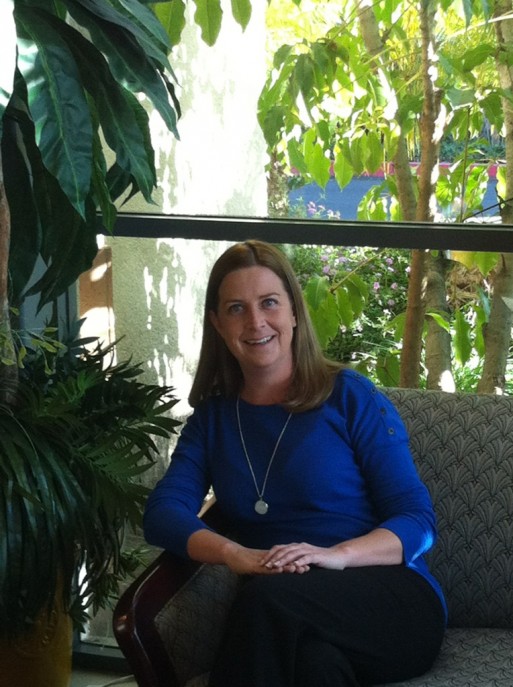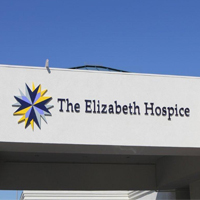Jennifer Marsh, LMFT, MS is Community Education & Outreach Coordinator at the Elizabeth Hospice, a private nonprofit in Escondido, CA. The Elizabeth Hospice provides hospice care and counseling to terminally ill individuals and their families, whether or not they can pay. Jennifer’s outreach position allows her the opportunity to educate others about hospice, and SevenPonds spoke to her about the importance of hospice care, the challenges it faces, and what you can do to help
Liz: First off, can you tell us a bit about the work you do?
Jennifer: My position is basically to go out and speak to the general public about issues relating to serious illness, caregiving, end-of-life, and grief and loss. I try to get the word out and educate; the more we educate, the more people feel comfortable about this conversation. We do a lot of outreach with faith communities. We have a program designed for businesses, to help their employees. We also have a program for veterans and do some partnerships with the VA and local organizations. We create as many collaborations and partnerships as we can to reach that population that we’re looking for, including local caregiver support agencies and senior centers, because we have that expertise on illness and end-of-life, and they can come in and work with us on the caregiving aspect. Right now we’re really trying to more with schools, from elementary school to college, to speak to staff as well as parents and students. Basically, I do outreach anywhere that will take me!
 Liz: Why is it important for people to know about and talk about hospice and end-of-life care?
Liz: Why is it important for people to know about and talk about hospice and end-of-life care?
Jennifer: The more we talk about these issues, the more comfortable we become. It’s not going away; we’re all going to die at some point. What we can do is really be prepared and have the education that can calm the chaos that goes on in a crisis situation. The more we talk about it, the more comfortable people feel talking about it with their loved ones, and there’s a ripple effect of being more open and honest and helping each other. And the more the community gets on board and can deal with it, the more our medical system will change, and health care providers will get on board.
Liz: What is the current state of hospice in this country? Is there enough funding?
Jennifer: Well, there’s a couple of different things happening. Obviously, there are the budget deficits in this country, and funding cuts have to come from somewhere. Hospice was targeted in the first funding cuts in 2009. There’s been somewhat of a lack of oversight with Medicare, so we’re seeing more and more fraud and abuse stories coming out. Those are really the reason that there’s so much crackdown on hospice. Unfortunately, what that’s doing, while it is eliminating the hospices that are engaging in fraudulent activity and abuse, it is also putting a strain on the ones that aren’t. We’re all going through these generic cuts and having to prove all our reimbursements. What happens is, we submit for reimbursement, and then the federal government or Medicare says “yea’ or “nay,” and can deny us reimbursement for a patient we’ve already seen or who has already died. Then there’s an appeal process, which takes on a whole life of its own.
I can really see both sides of it: I can see where there is quite a bit of fraud from areas around the country. Things are still popping up in the news, and I can see where oversight needs to happen. Unfortunately, because of that, there’s this media idea that hospice is wasteful spending, and it seems to be one of the easiest places to cut. In 2009, we went through our first round of cuts: a 7-year phase-out that would actually lower reimbursement rates by 4.2%, which would effectively wipe out some of the smaller hospices. Then, when the Affordable Care Act came out, it had some great things in it relating to children and palliative care, but it actually put in this productivity adjustment which would inevitably reduce reimbursement by 11, almost 12%, because they said that over the next ten years we’d be able to do more with cheaper services or better technology. It actually ended up over a span of time being an almost 16% reimbursement cut in what we’re getting paid to provide the services. A lot of hospices aren’t reimbursed for what they do anyway—feeding, hygiene—eventually someone will have to figure out what to do about that.
We also have a number of regulations coming through Congress, just like health care reform. Some new regulations are not consistent with the way hospice has been run.
 Liz: Can you describe some of these regulations?
Liz: Can you describe some of these regulations?
Jennifer: There’s a new regulation called the Face to Face regulation, which basically means that one of the doctors and nurse practitioners has to physically go in and visit to make sure the patient is still appropriately cared for. While this doesn’t seem so difficult, and it is well-intentioned, it’s just not the way that it’s always been done. It happens with everything: it’s a top-down approach, where the top is creating regulations without knowledge of what happens on a day-to-day basis.
And when you couple it with some other things—saying to us, do more with less, but send your people out more—they’re sort of inconsistent. We all know health care isn’t going down in costs, rather it’s going up. So this could be detrimental, trying to fit these regulations in, getting reimbursement cuts. It’s all difficult to navigate, especially for some of the smaller hospices—and most hospices are midsized to small—it’d be even more difficult for them.
Liz: What can be done to support hospice care in the U.S.?
Jennifer: There’s the National Hospice and Palliative Care Organization. They have HAN, an action network. There’s a number of different things they are doing, including working on the Help Hospice Act which just says, okay, here’s how we can meet you in the middle: before you cut our programs, let’s do some data collection on payment reimbursement; let’s adjust regulations, not eliminate, but add things to them; let’s curb fraud and abuse by adding more surveys. It’s a way of meeting in the middle rather than going to the extreme of either side.
We tend to get involved with Capitol Hill Day, HHA, things of that nature which advocate on behalf of all hospices. “Hospice on the Hill” Day, as it’s called, is really just going through Washington, to the elected officials, and trying to get the word out on why hospice is important, why we need to take a look at cuts, regulatory things we need to pay attention to. It’s about going in and lobbying. The idea is really, why? Why should I care about hospice? Why should Congress care about hospice? It’s all grassroots, raising awareness of what hospice does. And there’s emails and letters you can write to local representatives, using social media, etc.
Liz: Where do you see hospice going as a result of all these funding cuts? Is it a bleak picture?
Jennifer: I think it can be turned around. We’re getting more and more people, more elected officials, that are aware and have used the hospice service. My personal opinion is that, once we figure out a way to curb any fraud or abuse—which is the biggest concern in terms of tax dollars going to hospice—if we can do that and really show the value in hospice, we can turn it around. I think some of the smaller hospices will probably not be able to survive if cuts go through the way they’re supposed to, which is bleak, because a lot of them are providing good quality service in areas that big hospices aren’t. So there’s good and bad. There might be some casualties. But I also think that as a society, as really the most death-denying culture and society, we’re starting to change. It’s a work in progress.
 Liz: That’s very true. Do you find it’s difficult to initiate these conversations about hospice and end-of-life, particularly with some of the younger crowds you do outreach with?
Liz: That’s very true. Do you find it’s difficult to initiate these conversations about hospice and end-of-life, particularly with some of the younger crowds you do outreach with?
Jennifer: I do some health fairs, and when people see the logo, they put their eyes down and run past me! They say, I don’t need that yet. But I say, hold on, let’s talk for a second; maybe you don’t need me tomorrow, but eventually we’re all going to get to that point. Wouldn’t you rather have that information now before you hit a crisis? And I’ve actually used SevenPonds a number of times as a resource.
The same for college students: they say, I’m too young for this. But we all need this information, not just people over the age of 70. I went through a personal situation with my mother, and had I not had the education just from this job, I wouldn’t have been able to deal with what was happening. She ended up in the hospital on a ventilator, and fortunately had actually told us what she wanted, but imagine if I didn’t have this education. It doesn’t matter what age someone is.
Liz: Finally, what words of wisdom can you leave our SevenPonds readers with—what should we take away about hospice in America?
Jennifer: The most important thing that I want to get across when I do my outreach and education is simply: Hospice isn’t about dying. It’s really about living. It’s not giving up, it’s not losing hope. It’s really the opposite: taking control, living out however many days you have left on your terms, doing what you want to do and being at the best quality of life. With that in mind, the more we can get that message out to the general community, the more we can change the idea of hospice and change the impact on funding cuts. Changing the stereotype of hospice, talking about it in terms where it’s not a death panel, changing how it’s viewed will change all of these other things. More people will see it as something that shouldn’t be cut.
Liz: Thanks, Jennifer, for speaking with us about this important issue!

 What are some End-of-Life issues? An Interview with Jennifer Marsh
What are some End-of-Life issues? An Interview with Jennifer Marsh


 “Songbird” by Fleetwood Mac
“Songbird” by Fleetwood Mac
 First the Wealth Gap, Now the U.S. Has a Growing Health Gap
First the Wealth Gap, Now the U.S. Has a Growing Health Gap















